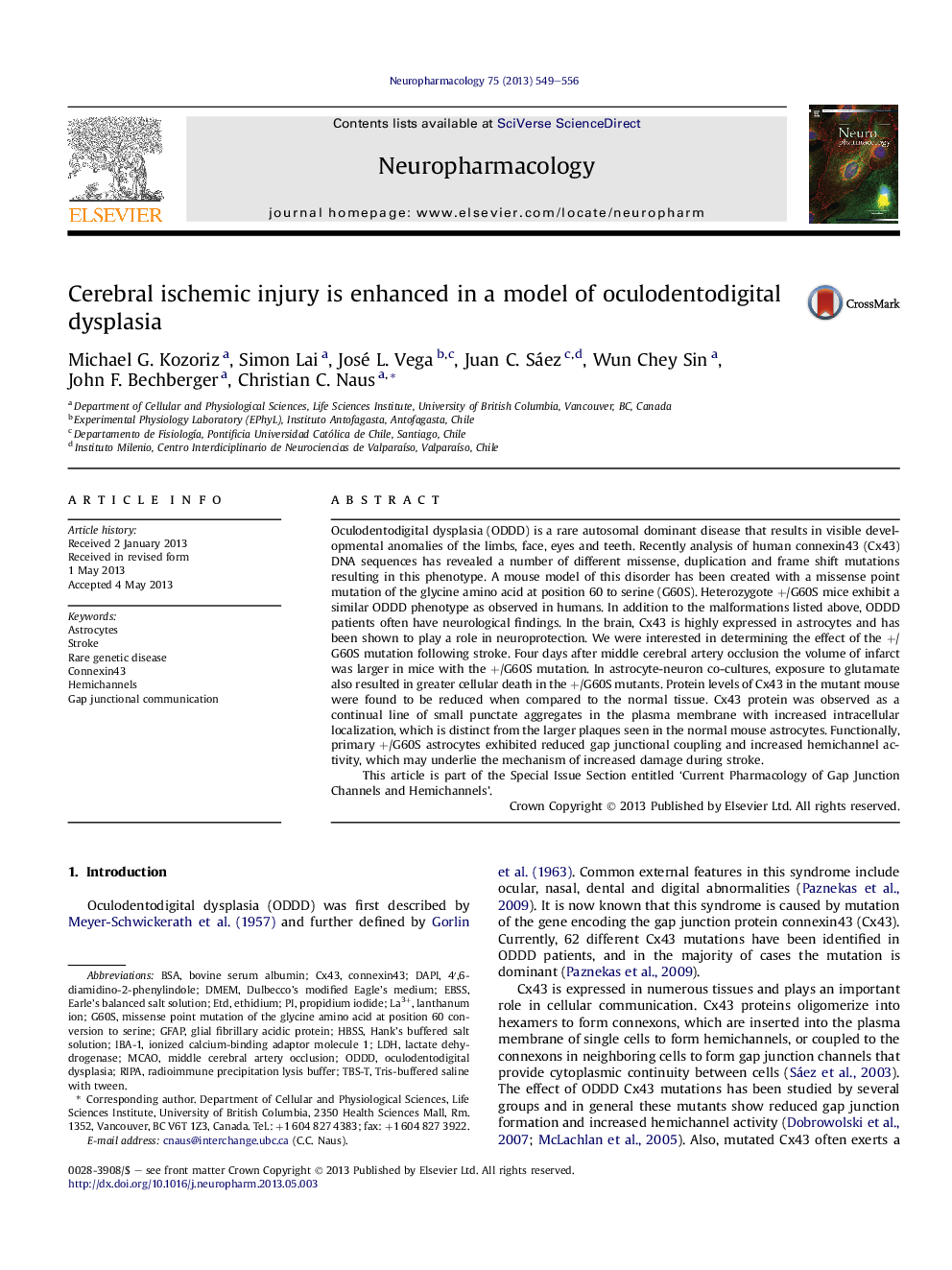| کد مقاله | کد نشریه | سال انتشار | مقاله انگلیسی | نسخه تمام متن |
|---|---|---|---|---|
| 2493330 | 1556638 | 2013 | 8 صفحه PDF | دانلود رایگان |

• ODDD is a disease caused by an autosomal dominant mutation of Gja1.
• This connexin43 mutation alters channel activity and increases injury in stroke.
• ODDD patients may be at increased risk following ischemic events.
Oculodentodigital dysplasia (ODDD) is a rare autosomal dominant disease that results in visible developmental anomalies of the limbs, face, eyes and teeth. Recently analysis of human connexin43 (Cx43) DNA sequences has revealed a number of different missense, duplication and frame shift mutations resulting in this phenotype. A mouse model of this disorder has been created with a missense point mutation of the glycine amino acid at position 60 to serine (G60S). Heterozygote +/G60S mice exhibit a similar ODDD phenotype as observed in humans. In addition to the malformations listed above, ODDD patients often have neurological findings. In the brain, Cx43 is highly expressed in astrocytes and has been shown to play a role in neuroprotection. We were interested in determining the effect of the +/G60S mutation following stroke. Four days after middle cerebral artery occlusion the volume of infarct was larger in mice with the +/G60S mutation. In astrocyte-neuron co-cultures, exposure to glutamate also resulted in greater cellular death in the +/G60S mutants. Protein levels of Cx43 in the mutant mouse were found to be reduced when compared to the normal tissue. Cx43 protein was observed as a continual line of small punctate aggregates in the plasma membrane with increased intracellular localization, which is distinct from the larger plaques seen in the normal mouse astrocytes. Functionally, primary +/G60S astrocytes exhibited reduced gap junctional coupling and increased hemichannel activity, which may underlie the mechanism of increased damage during stroke.This article is part of the Special Issue Section entitled ‘Current Pharmacology of Gap Junction Channels and Hemichannels’.
Journal: Neuropharmacology - Volume 75, December 2013, Pages 549–556